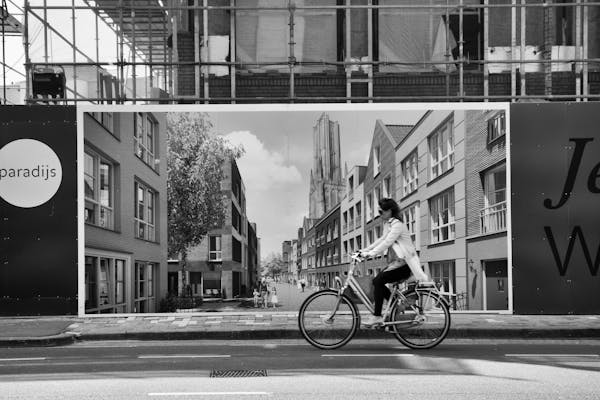Mastering Billboard Advertising: Leasing, Management, and Impact Analysis

Billboard advertising remains a potent tool in a marketer's arsenal, thanks to its high visibility and the ability to reach thousands of consumers daily. Understanding the intricacies of billboard leasing contracts, the benefits of static billboards, and effective billboard campaign management are crucial for maximizing returns on investments. Additionally, conducting a thorough billboard impact analysis can provide insightful data, helping advertisers refine their strategies. This post delves deep into these aspects, offering a comprehensive guide to mastering billboard advertising.
Understanding Billboard Leasing Contracts
Navigating through billboard leasing contracts can be daunting, yet it is pivotal for a successful advertising campaign. A well-structured leasing contract ensures clarity between the billboard owner and the advertiser, outlining terms that govern the use of the billboard space.
Key Elements of a Billboard Leasing Contract
- Duration: The length of the lease agreement is critical. It typically ranges from one to ten years, depending on the location and the billboard type.
- Renewal Terms: Details on how and when the contract can be renewed are essential to avoid future disputes.
- Cost Structure: This includes the rent, maintenance fees, and any other charges like utilities or taxes associated with the billboard.
- Termination Clauses: Conditions under which the contract can be terminated before the end of the lease term.
- Liability and Insurance: Specifies who is responsible for damages and maintenance, and the types of insurance required.
It is advisable to work with a lawyer specialized in advertising or commercial leases when drafting or signing a billboard lease. They can help navigate local regulations, zoning laws, and ensure the contract protects your interests.
The Advantages of Static Billboards
While digital billboards have become popular, static billboards still offer significant advantages that make them appealing to many advertisers. Their simplicity, cost-effectiveness, and audience reach continue to make them a valuable advertising tool.
Benefits of Using Static Billboards
- Cost-Effectiveness: Generally, static billboards are less expensive than digital alternatives, both in terms of production and maintenance costs.
- Visibility: They provide continuous exposure, displaying an advertisement 24/7 to all who pass by.
- Simplicity: With a straightforward design and message, they are easier to produce and can be quite impactful when executed well.
- Durability: Built to withstand various weather conditions, static billboards have a long lifespan.
- Wide Reach: Strategically placed static billboards can reach a broad audience, including drivers, commuters, and pedestrians.
For businesses considering large-scale outdoor campaigns, static billboards can be an effective part of a broader marketing strategy, particularly in high-traffic areas.
Effective Billboard Campaign Management
Effective billboard campaign management involves careful planning, execution, and monitoring. It ensures that the advertising reaches the intended audience and that the message aligns with the brand’s overall marketing strategy.
Steps to Manage a Billboard Campaign
- Objective Setting: Clearly defining what the campaign aims to achieve (e.g., brand awareness, product launch).
- Design and Message: Crafting an engaging and memorable billboard design that conveys the message succinctly.
- Location Selection: Choosing the right locations based on traffic data, visibility, and demographic studies.
- Installation and Maintenance: Ensuring the billboard is properly installed and maintained throughout the campaign duration.
- Monitoring and Adjustments: Continuously monitoring the campaign’s performance and making necessary adjustments.
Using specialized software for billboard campaign management can help streamline these processes, providing tools for design, scheduling, and analytics.
Conducting Billboard Impact Analysis
To gauge the effectiveness of a billboard advertising campaign, conducting a comprehensive impact analysis is essential. This analysis helps understand how the billboard has influenced consumer behavior and brand perception.
Methods for Billboard Impact Analysis
- Traffic Count Analysis: Evaluating the volume of traffic that passes the billboard and estimating potential viewership.
- Consumer Surveys: Gathering data directly from the audience through surveys to assess recall and perception changes due to the billboard.
- Sales Data Comparison: Comparing sales data before and after the campaign to measure direct impact on sales.
- Digital Integration: Using QR codes or social media hashtags on billboards to track engagement and conversions.
Combining these methods provides a robust framework for understanding the overall impact of a billboard campaign, allowing advertisers to make informed decisions about future advertising strategies.
In conclusion, mastering billboard advertising through effective leasing, campaign management, and impact analysis can lead to significant advantages for businesses. By taking a strategic approach to each element of billboard advertising, companies can enhance their visibility, engage more effectively with their target audience, and achieve a greater return on their advertising investments.
Whether you are new to outdoor advertising or looking to refine your existing strategies, focusing on these core aspects will help you harness the full potential of billboard advertising.



